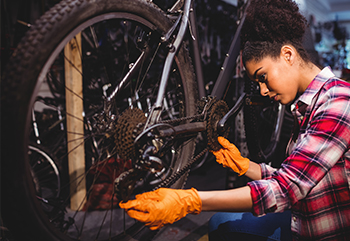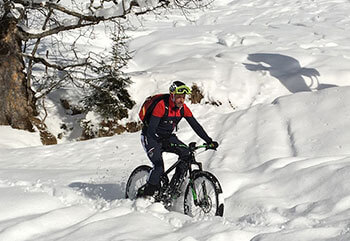5 Easy Steps to Support You in Your Cycling Endeavour

It's a common misconception that you've lost your chance if you didn't learn to cycle as a kid. Every day you have scores of people learning to cycle. Most of them, kids, but also quite a growing number of adults. Learning to ride a bicycle as an adult is not more complicated than learning to ride a bicycle as a kid. It involves the same step-by-step approach to the cycling process. Even kids feel a sense of fear when they first start to learn how to ride a bicycle. Adults need to overcome their grown-up fears, nerves and with a bit of patience, persistence, and following the proper technique; anyone can learn to ride a bicycle.

We've put together steps that have helped adult cyclists learn to cycle.
Before you start, ensure that you have picked a bicycle that is your fit and gives you comfort in the riding position. Do check our post on choosing the appropriate bicycle. Dress comfortably in clothes that do not restrict your cycling movement, and ensure you wear good sports shoes and a helmet. Look for a location where you feel comfortable and not worried about being seen and judged preferably look out for a place without traffic and a paved surface.
Now, follow these steps that have converted non-cycling adults into confident cyclists.
1) Adjust the Bicycle
Lower the seat height to sit on the saddle or seat with your feet resting on the ground. Make sure you can still reach the handlebars and brakes comfortably. Additionally, if you can remove the pedals, it would help you during your initial learning period. It is a simple process, and you would require a wrench or an Allen key.

2) Mounting and Braking
Practice mounting your bicycle leaning to the right of you practice mounting by swinging your foot across. Now walk along straddled on the bike.
Practice braking by squeezing the brakes gently when you want to stop to get a feel for how much pressure it takes to slow down or stop. Make sure you press the front and rear brakes at the same time. Next, try to do a smooth, controlled stop that's not jerky or too abrupt. Practice stopping every 15 to 20 feet until you can do so smoothly.
3) Coasting and Gliding
While straddled and seated on your bicycle, use running strides to propel yourself forward. Then lift your feet off the ground and glide. Keep practicing till you can glide without having to drop your feet down to balance.

4) Eyes Up ahead and Steer Large Turns
Are you coasting and gliding comfortably? If yes, that's great. Now ensure that you can glide while keeping your eyes up, looking ahead of you, and not focusing on your feet. It assists in maintaining balance and following your line of vision. Also, steer large turns and figure eights if possible.
5) Start Pedalling
Once you can maintain balance while gliding and have mastered braking and keeping your vision steady, you're ready to pedal. You can put back the pedals now. Start with one foot on the ground and the opposite foot on a pedal in the two o'clock position to give you some momentum when you push off. Then push down on the pedal and add your other foot as you move forward. Remember, you have to have momentum before you lift the other foot off the ground. The momentum helps to balance the bicycle. Keep your finger on the brakes so that you can use them when you wish to stop. You may have to make multiple attempts before you can manage to pedal while lifting your feet and in a straight line. And that's perfectly all part of the learning process.

Keep practicing till you have developed enough confidence. You can move your seat up so that your feet reach the pedals with only a very slight bend.
Cycling by-lanes with minimal vehicular traffic before you venture into the streets. Learn the basic hand signals and practice them even as you are practicing in a non-vehicular location. Sometimes the help of another person who will help you along your cycling journey by giving you a hand in holding the seat and with encouraging words may make this process easier. Look out for that friend who could help you. Alternatively, if you feel that a professional cyclist trainer is what you need, look out for one online. Yes, cycling trainers will use similar steps that we've shared with you but are trained for this. They are encouraging and can give a boost to your confidence.
Whatever way you choose to reach your goal to be a confident cyclist - just do it. Once there you are out there reclaiming the outdoors, you will wonder what took you so long.
Do you have an interesting experience of learning to ride a bicycle as an adult? We'd love to hear from you. Write to us by adding a comment in the space below.
Related Blogs

Electric Bicycle
5 Maintenance Tips of Electric Bicycle | InfographicBicycle maintenance is most important for longevity. So, here are few tips that will help you to maintain your electric bicycle for a long time.

Mountain Bikes
8 Easy Tips for an MTB NewbieA few tips that you can use to make your MTB learning days an incredible experience

Mountain Bikes
Eight Tips To Ace Mountain BikingA mountain biking trip, while exciting can often be dangerous too. Read through these eight important and practical tips to ace the adventure.

